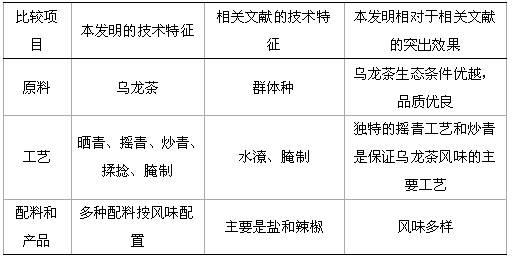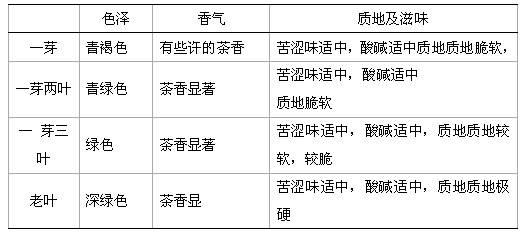A kind of preparation method of pickled tea of oolong tea
A production method, technology of oolong tea, applied in food preparation, application, food science, etc.
- Summary
- Abstract
- Description
- Claims
- Application Information
AI Technical Summary
Problems solved by technology
Method used
Image
Examples
Embodiment 1
[0029] According to the standard of one bud and two leaves, pick 3 kg of fresh leaves of Narcissus variety tea, and put them in a bamboo sieve to dry in the sun for 15-30 minutes. interval of 3 minutes), when the green grass smell in the tea leaves dissipates, and when 50% of the leaves droop and become soft, the tea leaves are evenly distributed into several bamboo sieves, and the green leaves are shaken for the first time for 15 times. Leave to ferment for 45 minutes, shake 30 times for the second time, let stand for fermentation for 45 minutes, shake 45 times for the third time, and let it stand for fermentation, shake 5-6 times until the tea leaves show obvious red edges, three red and seven green. Put the tea leaves into the greening pot and finish them at high temperature. When there is no grass smell, the water content of the leaves becomes lower, the water loss is about 50%, and the leaves become transparent and green. Put the tea leaves that have been greened into cle...
Embodiment 2
[0031] According to the method described in implementation example 1, the processing conditions are compared and optimized:
[0032] Table 2 Sensory evaluation results of pickled tea made with different raw materials and determination of picking green standard
[0033]
[0034] As shown in Table 2: It is most suitable to use one bud and three leaves as raw materials to make pickled tea. 1) The tea has a prominent aroma, moderate bitterness and astringency, moderate acidity and alkalinity, softer and crisper texture, and better quality than others. 2) Compared with other Compared with one bud, one bud and two leaves, the cost can be reduced. 3) Compared with the old leaves, the texture is softer, crisper and better in taste.
[0035] Table 3 Comparison of the results of pickled tea prepared by different drying processes
[0036]
[0037] As shown in Table 3: it is more suitable to use high temperature sun drying under the sun, which can save production time compared with...
Embodiment 3
[0046] According to the method described in implementation example 1, sensory evaluation is done to pickling time technology:
[0047] Table 6 Sensory evaluation results of pickled tea prepared at different pickling times
[0048]
[0049] Note: Pickled tea can be eaten after seven days, stored at room temperature for 40 days, preferably consumed within one month, and refrigerated for 180 days.
[0050] As shown in Table 6: it is best to eat within one month, and the taste and fragrance are the most suitable.
PUM
 Login to View More
Login to View More Abstract
Description
Claims
Application Information
 Login to View More
Login to View More - R&D
- Intellectual Property
- Life Sciences
- Materials
- Tech Scout
- Unparalleled Data Quality
- Higher Quality Content
- 60% Fewer Hallucinations
Browse by: Latest US Patents, China's latest patents, Technical Efficacy Thesaurus, Application Domain, Technology Topic, Popular Technical Reports.
© 2025 PatSnap. All rights reserved.Legal|Privacy policy|Modern Slavery Act Transparency Statement|Sitemap|About US| Contact US: help@patsnap.com



